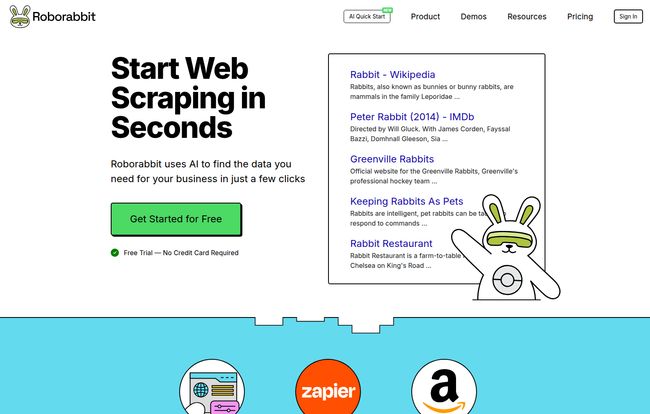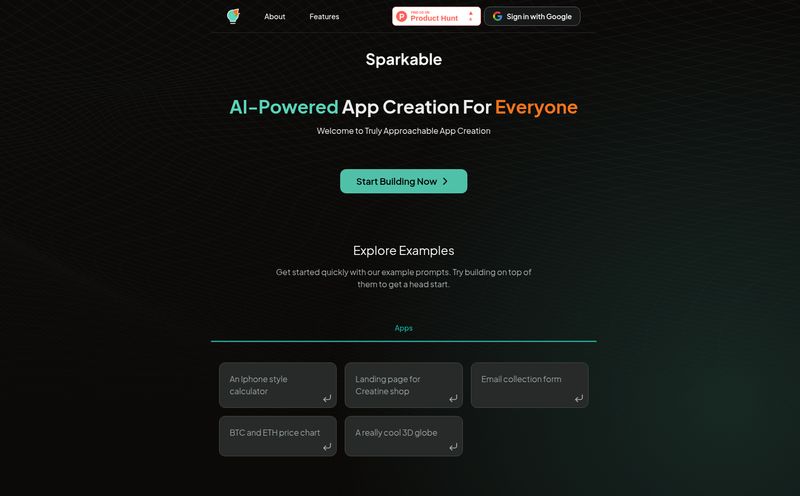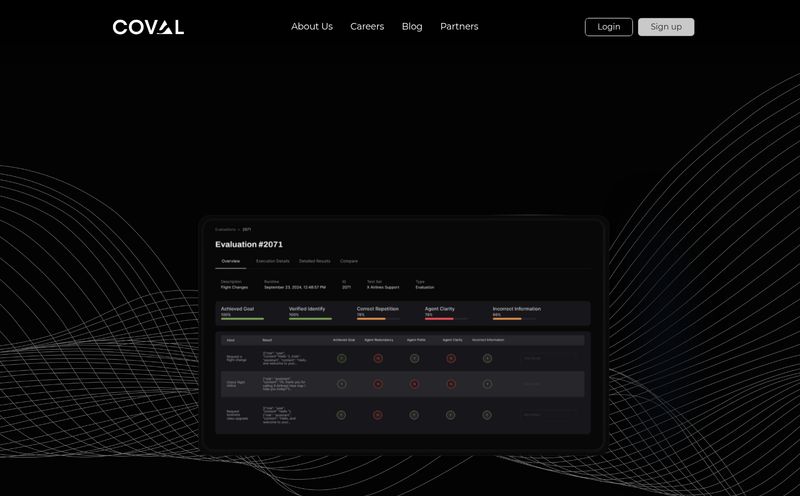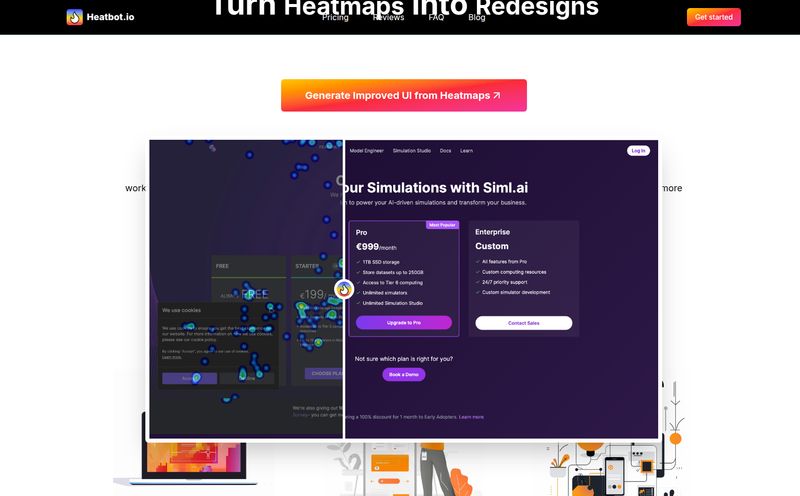I’ve been in the SEO and traffic game for… well, let’s just say a long time. Long enough to remember when “web scraping” meant begging a developer friend to write a janky Python script that would break the second a website changed a single CSS class. The horror. We’d spend days debugging just to pull a list of prices or leads.
Then came the first wave of visual scraping tools. Some were good, some were clunky as all get-out, and most still required a pretty technical mindset. So when I see a tool like Roborabbit pop up with its cute mascot and bold claims—"Start Web Scraping in Seconds" and "No Code? No Problem"—my veteran cynicism kicks in. But, I gotta say, my curiosity does too.
Is this just another shiny object, or is it a genuinely useful tool that lowers the barrier to getting the data we all desperately need? I spent some time with it, and honestly, the answer surprised me a bit.
What Exactly is Roborabbit? (And Why Should I Care?)
Let's cut through the marketing jargon. Roborabbit is a nocode web scraper and robotic process automation (RPA) tool. That’s a mouthful, right? Think of it like this: you teach a smart little robot to perform tasks in a web browser for you. Go to a site, type something in a search bar, click a button, copy all the results, and save them to a spreadsheet. All those repetitive, mind-numbing tasks? Roborabbit is designed to do them on autopilot.
This isn't just about grabbing data. It's about automating entire workflows. It's one part data extractor, one part browser assistant. And the secret sauce, the thing they're really leaning into, is the AI. It tries to intelligently figure out what data you want on a page, which is a step up from the old way of manually pointing to specific HTML elements. For anyone who's ever right-clicked and hit "Inspect Element" until their eyes bled, you know how much of a pain that can be.
Putting Roborabbit to the Test: The Nocode Experience
Okay, so the biggest promise is for the non-technical folks. The marketers, the sales teams, the startup founders wearing a dozen hats. The people who hear "API" and their eyes glaze over. For them, Roborabbit offers a simple, visual, three-step process: Perform Search, Capture Data, Save to Sheet.
You essentially build a recipe, or a "task," by chaining these actions together. It's a drag-and-drop kind of affair. You can tell it to open a list of URLs, scrape the name, title, and company from each person’s profile on a business site, and then neatly dump it all into a Google Sheet. No coding, no command line, no tears.

Visit Roborabbit
This is where I see the most immediate value. I’ve worked with so many marketing teams who have incredible ideas for data-driven campaigns but are completely bottlenecked by their lack of technical resources. A tool like this puts the power directly in their hands. Want to monitor competitor pricing every day? Build a task. Need to compile a list of potential leads from an online directory? Build a task. It turns a week-long data collection project into a a ten-minute setup.
For the Techies: What's Under the Hood?
Now, my inner nerd was screaming, "But what about me?!" I like my APIs. I want to integrate things. I don't always want to live in a GUI. And Roborabbit didn't disappoint here, which was a pleasant surprise.
They have a full-blown REST API. This is huge. It means you can trigger your pre-built scraping tasks from your own applications. You can build a simple form on your internal dashboard, have a salesperson enter a company name, and ping the Roborabbit API to go find all the relevant contacts. The heavy lifting of the scraping is outsourced, but you control when and how it runs.
And then there are the integrations. Thank goodness for Zapier and Make.com support. This is the glue that holds the modern marketing stack together. With this, you can do things like:
- When a new company signs up (trigger in Stripe), run a Roborabbit task to scrape their website for more info.
- Scrape a list of industry news articles every morning and automatically post them to a Slack channel.
- Find new real estate listings and send yourself a customized email notification.
The possibilities get pretty wild when you can connect data scraping to the thousands of other apps on Zapier. This moves Roborabbit from just a "scraper" to a true automation platform.
The Best Roborabbit Features I Found
After playing around, a few things really stood out. First, the AI-powered data extraction is legit. It's not perfect, no AI is, but it's significantly faster than manually selecting data points on complex sites. It makes a good first pass, and you can usually clean it up from there. A massive timesaver.
Second, the concept of Unlimited Tasks and Unlimited Concurrency on all plans is a big deal. Many competitors limit how many scrapers you can build or how many can run at the same time. Roborabbit's approach is more generous, letting you build out a whole library of automations and run them in parallel without immediately hitting a paywall. The limitation, as we'll see, comes from somewhere else.
Let's Talk Money: Roborabbit Pricing
Alright, the all-important question: what's this gonna cost me? The pricing structure is pretty straightforward, which I appreciate. No hidden fees or confusing tiers. It basically boils down to how much you plan to use it.
| Plan | Price | Key Features |
|---|---|---|
| Automate | $49 / month | 10,000 Credits, Unlimited Tasks, API, Zapier |
| Scale | $99 / month | 100,000 Credits, Team Members, Priority Support |
| Enterprise | $249 / month | 250,000+ Credits, everything in Scale |
The main differentiator here is credits. The Automate plan is perfect for a small business or a solo marketer doing regular, but not massive, scraping jobs. The Scale plan is where agencies or growing businesses will likely land, especially with the addition of team members. And Enterprise is for the data-hungry beasts out there.
A quick note on the free trial: they give you 100 credits to start, with no credit card required. I love this. It's enough to actually build a real task and see if it works for your use case before you commit.
The Not-So-Perfect Parts (Because Nothing Is)
I wouldn't be doing my job if I didn't point out the potential downsides. My biggest hesitation is with the credit-based system. While the unlimited tasks are great, your usage is ultimately throttled by credits. What's a credit? A page load? An action? This is something you have to figure out, and you could burn through them faster than expected on a big job. You just need to be mindful of your usage.
The other thing, and this is a big one, is that according to their FAQ, your tasks are deleted if you cancel your plan. Whoa. That’s a bit of a bummer. It means you can't just pause your subscription for a month and expect your beautifully crafted automations to be waiting for you when you come back. My advice? Document your complex workflows somewhere else just in case.
So Who is Roborabbit Really For?
After all this, I have a pretty clear picture of the ideal Roborabbit user.
- Marketers & Sales Ops: For lead generation, competitor analysis, and content aggregation without waiting for a developer. This is probably the sweet spot.
- Startup Founders: For gathering market data, testing ideas, and building a minimum viable product (MVP) that relies on external data. Fast and cheap.
- Agencies: To quickly spin up data solutions for multiple clients. The team features on the Scale plan are built for this.
- Developers (with a caveat): For developers who hate writing boilerplate scraper code and just want to get to the data. It's a great way to offload the finicky parts of scraping and just call an API.
Final Thoughts: A Worthy Tool in the Automation Arsenal
So, back to my original question. Is Roborabbit the real deal? Yeah, I think it is. It's not a magic wand that solves every data problem, but it successfully bridges the gap between powerful automation and user-friendliness. It empowers non-technical users in a way that older tools never could, while still giving developers the API access they need to integrate it into larger systems.
It’s like the difference between building a car from scratch and getting a Tesla on a lease. Sure, building it yourself gives you ultimate control, but sometimes you just want to get in and drive. Roborabbit lets you get in and drive.
Frequently Asked Questions about Roborabbit
What kind of tasks can I automate with Roborabbit?
You can automate almost any repetitive task you do in a browser. This includes scraping data from websites, monitoring prices, filling out forms, performing searches, and extracting information for lead generation or market research.
Do I really need to know how to code?
For the primary features, no. The nocode task builder is designed for users without any programming experience. However, if you want to use the REST API to trigger tasks from your own software, some development knowledge will be necessary.
How does the credit system work?
Credits are used up as your tasks run actions, like loading a webpage or extracting data. The exact consumption depends on the complexity of the task. The free trial is a good way to estimate how many credits your specific workflows will require before you choose a paid plan.
What happens to my data and tasks if I cancel my plan?
This is important: if you cancel your subscription, your created tasks will be deleted. Any data you have already extracted and saved (e.g., to Google Sheets or your own database) is yours to keep, but the automation workflows themselves will be removed from your Roborabbit account.
Can I integrate Roborabbit with other tools I use?
Yes, absolutely. Roborabbit offers powerful integration options through its native REST API and its support for platforms like Zapier and Make.com. This allows you to connect it to thousands of other applications like Slack, Google Sheets, HubSpot, and more.
Is there a free trial available?
Yes, Roborabbit offers a free trial that includes 100 credits to test out the platform. A credit card is not required to sign up for the trial, so you can explore its features risk-free.



